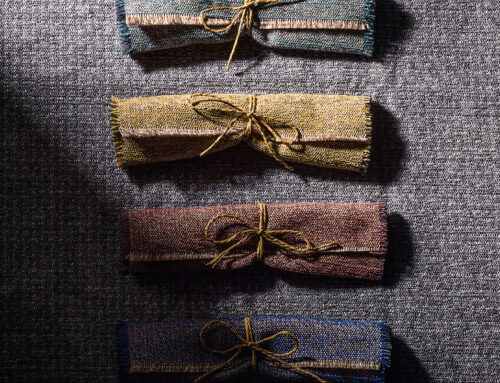As a textile designer, I am constantly exposed to the latest developments in the textile industry through reading and research. Given my role, I closely monitor the advancements in textile recycling. Despite having an in-depth understanding of the entire process, I felt compelled to prepare a blog post to shed light on this subject for a better understanding within the community. What truly happens in recycling? How much of it comes full circle? Will recycling materials truly bring benefits, or will there be costs and drawbacks for future generations? Moreover, why should recycling be pursued? Is there a production model that doesn’t necessitate recycling? Let’s delve into the essence of recycled textile practices.To answer these questions, it’s imperative to initially examine the supply-demand equilibrium in the textile industry, where the root of these processes lies. The industry has been developing strategies to increase supply and profitability due to longstanding high demand. With technological advancements, one of these strategies involves reprocessing certain textile waste back into production. While I’ll touch on other strategies, even if they are slightly off-topic, it’s important to mention them for those curious. Innovative solutions like reducing fiber and yarn density (for simpler fabrics), reintroducing lighter color ranges into fashion (to reduce dye and water consumption), and increasing the ratio of natural fibers to synthetic fibers (such as wool-polyester blends) are presented.Returning to our topic, let’s start with the answer to our first question. Used textile material arrives at the recycling facility. The decision is made regarding how much of it will be recycled or is recyclable. For instance, if the color is intended to remain, mechanical recycling is pursued. In the meantime, it’s worthwhile to explain what mechanical and chemical textile recycling entail. In mechanical recycling, textile waste is fragmented and dissolved into fibers or melted down to tiny particles through various mechanical processes until small air particles are obtained. It is then spun back into new yarn of the desired thickness. While this process is relatively simple, the shortening of fiber lengths requires the addition of a certain amount of binding agent to create new yarn, thereby limiting the rate of recycling in the product. On the other hand, chemical recycling disintegrates textile waste down to its smallest building blocks (molecular level), then reclaims textile raw material and transforms it into new yarn. This method is commonly used for many synthetic recycled yarns. While this technology is relatively new, it’s done on a small laboratory scale and requires a significant amount of water. An important aspect to consider is that the labor, machine power, etc., invested in recycling a textile should cost less than half of the new product’s cost, in order to ensure a more sustainable world for future generations.In terms of answering the question of why recycling should be pursued, it’s necessary to look at it this way: previous generations were recycling in their own way. They would create throw pillows or cushions from old fabrics, but due to fewer possibilities and resources, it was a form of reusing. Today, we contribute to the better utilization of our land by reprocessing significant quantities of products using the opportunities brought by the era. The fundamental definition of this situation is actually the vicious cycle born out of the low-quality, fast fashion mindset. Even major textile manufacturers, including the society as a whole, might not need as much recycling if they embraced a slower fashion mentality. It’s important to address this matter: while these large textile companies market their recycled collections under environmentally-friendly banners, they also promote the fast fashion concept, encouraging consumers to buy more products. Consequently, a person is compelled to purchase a more simply made sweater instead of investing in a quality piece that could be worn for years. When companies produce different types of sweaters the following year, the color and design of the previous sweater become outdated. This leads to another purchase, contributing to the recycling and capitalism cycle.
Tekstil Geri Dönüşümünün Keşfedilmemiş Yönleri
By admin|2025-02-10T02:43:39+03:00#!30Cum, 10 Haz 2022 23:02:04 +0300+03:000430#30Cum, 10 Haz 2022 23:02:04 +0300+03:00-11+03:003030+03:00x30 10pm30pm-30Cum, 10 Haz 2022 23:02:04 +0300+03:0011+03:003030+03:00x302022Cum, 10 Haz 2022 23:02:04 +03000211026pmCuma=4687#!30Cum, 10 Haz 2022 23:02:04 +0300+03:00+03:006#10 Haziran 2022#!30Cum, 10 Haz 2022 23:02:04 +0300+03:000430#/30Cum, 10 Haz 2022 23:02:04 +0300+03:00-11+03:003030+03:00x30#!30Cum, 10 Haz 2022 23:02:04 +0300+03:00+03:006#|Genel|The Unexplored Aspects Of Textile Recycling için yorumlar kapalı


